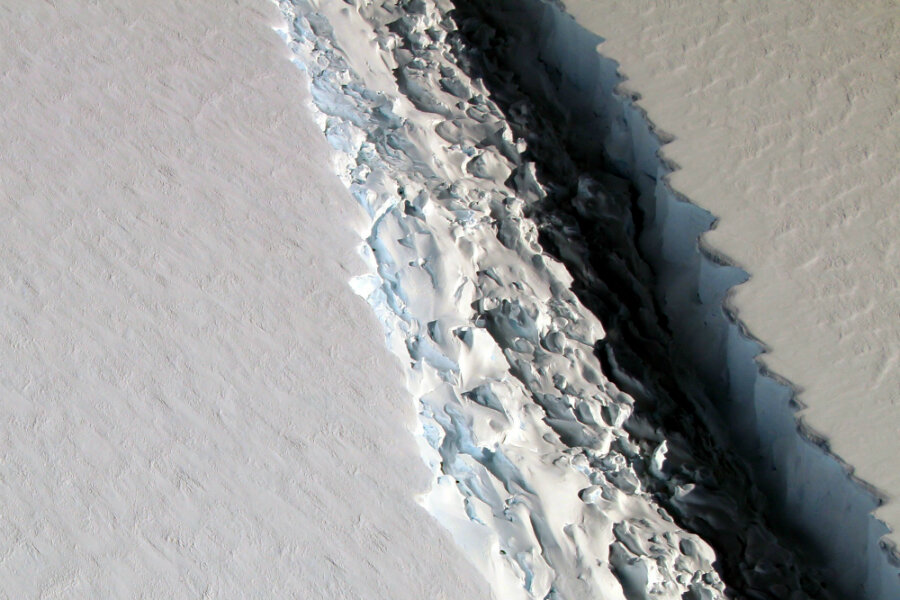Antarctica's ice shelf forms crack the size of Delaware
New NASA images of Antarctica’s Larsen C ice shelf reveal a massive and growing crack about 70 miles long, more than 300 feet wide, and more than a third of a mile deep.
The shelf is expected to cleave in two, as a neighboring shelf did in 2002. Once it does, scientists say it will produce an iceberg the size of Delaware. As the ice shelf is already floating, its rupture won't itself raise sea levels, but it’s seen as evidence of polar-cap retreat that could raise levels, over time.
The photographs are fruit of a NASA survey, Operation IceBridge, that carries “the most innovative and precise package of instruments ever flown over Antarctica,” according to John Sonntag, one of the mission’s scientists.
“We are probing the most remote corners of Spaceship Earth to learn more about changes that affect all of us locally, such as how ice sheets are contributing to sea level rise,” said NASA Deputy Administrator Dava Newman in a November interview with the agency’s website. “At NASA we explore: not only space, but also our home planet.”
The announcement comes as NASA’s missions face a possible reconfiguration under the administration of presidential-elect Donald Trump that could shift resources away from the agency’s Earth-centric research and toward the space-travel work of the agency’s telegenic yesteryear.
That’s because many of the agency’s projects on Earth deal to some extent with climate change – with some likely falling into the category of what Bob Walker, a former congressman who is serving as the point person on the issue for the president-elect’s transition team, derided as “politically correct environmental monitoring” in a November interview with The Guardian.
“We see NASA in an exploration role, in deep space research,” Mr. Walker told the paper then. “Earth-centric science is better placed at other agencies where it is their prime mission.”
“My guess is that it would be difficult to stop all ongoing NASA programs but future programs should definitely be placed with other agencies,” he added. “I believe that climate research is necessary but it has been heavily politicized, which has undermined a lot of the work that researchers have been doing. Mr. Trump’s decisions will be based upon solid science, not politicized science.”
Operation IceBridge likely wouldn’t be affected until 2019, when its funding is scheduled to run out.
The present campaign covered the largest ever swath of Antarctica. In its six weeks of launches from its base in Punta Arenas, Chile, the team carried out 24 flights over Antarctica, including two over the South Pole – a rarely imaged area, since satellites don’t fly over it.
Dr. Sonntag told NASA, "We flew as many flights as we did in our best prior campaigns down here, and we certainly got more science return out of each flight than we have before, due to steadily improving instrumentation and also to some exceptionally good weather in the Weddell Sea that favored our sea ice flights."
These six weeks may be "the best campaign IceBridge has ever had," he said.






